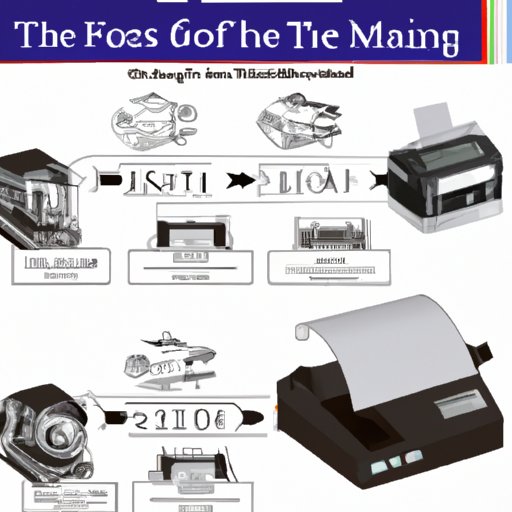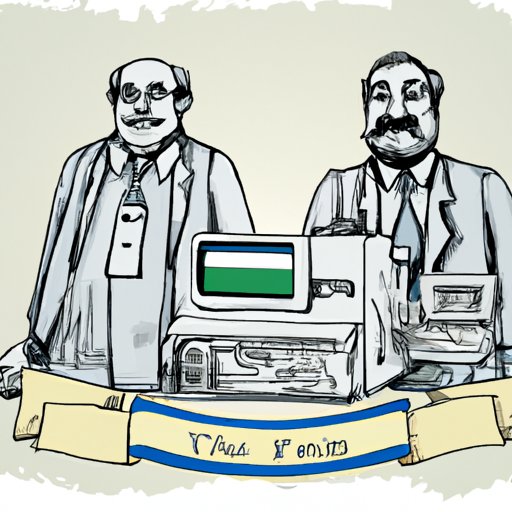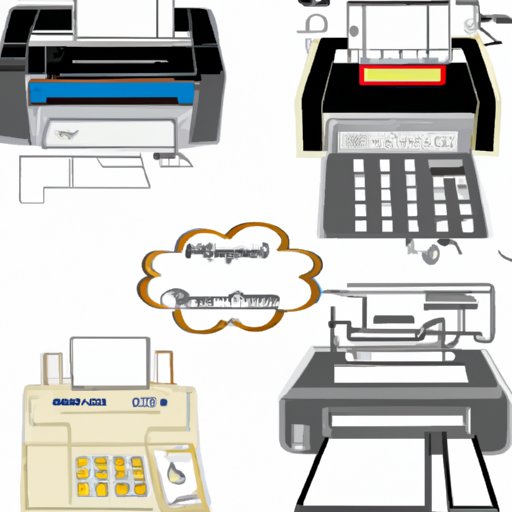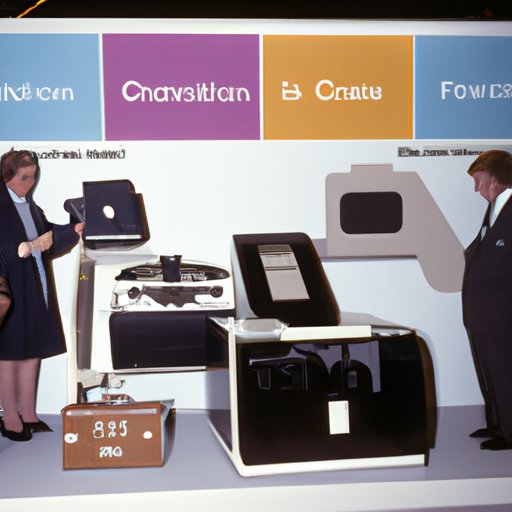Introduction
The fax machine is a device used to send images or documents electronically through telephone lines. This technology revolutionized communication, allowing people to quickly and easily transmit information over long distances without having to physically mail it. But who invented the fax machine? In this article, we’ll take a look at the history of the fax machine, the pioneers who made it possible, and how it has evolved over time.

A Timeline of the Invention and Development of the Fax Machine
The first patent for a fax machine was issued to British inventor Alexander Bain in 1843. His device used a clock mechanism to copy handwritten messages onto chemically treated paper. However, the machine was unreliable and could only be used for short distances. It wasn’t until the 1920s and 1930s that further experiments with facsimile technology began to take place. In 1964, Xerox introduced its first commercial fax machine, which was followed by other companies like Panasonic and Toshiba in the 1980s. By this time, facsimile machines had become more widely used and were being adopted by businesses around the world.

The Inventors Who Pioneered the Technology of the Fax Machine
Alexander Bain was the first person to patent a fax machine, but he wasn’t the only one responsible for the invention. Canadian inventor Donald Hings developed the first portable wireless facsimile system during World War II. American physicist Chester Carlson is credited with developing the technology behind the xerographic process, which is the basis of modern-day photocopying and faxing. Finally, the Xerox Corporation played a major role in the development of the fax machine, introducing their first commercial model in 1964.
A Comparison of Early Fax Machines to Modern-Day Models
Early fax machines were bulky and expensive compared to modern models. The first commercial model from Xerox weighed over 100 pounds and cost nearly $30,000. Today’s machines can weigh as little as 10 pounds and cost under $200. Early models also lacked features like color printing, scanning, and networking capabilities, while modern models come with these features and more.
What Impact Did the Invention of the Fax Machine Have?
The invention of the fax machine had a significant impact on business communication. Before the fax machine, sending information over long distances was slow and unreliable. With the introduction of the fax machine, it became much easier and faster to send documents, increasing communication speed and efficiency. This changed the way business was conducted, allowing companies to quickly and easily send important documents and contracts.
A History of How Fax Machines Have Evolved Over Time
Over the years, fax machines have gone through a number of changes and improvements. Early models operated using analog technology, which was eventually replaced by digital technology in the late 1990s. As technology advanced, additional features like color printing, scanning, and networking capabilities were added to modern-day models.

An Overview of How Fax Machines Work
Fax machines use an electronic signal to send information over telephone lines. To send a fax, you simply place your document in the machine and enter the recipient’s phone number. The machine then converts the document into an electronic signal and sends it to the recipient’s fax machine. To receive a fax, all you need to do is turn on the machine and wait for the incoming transmission.
The Benefits of Using a Fax Machine in Business Today
Despite the rise of digital communication technologies like email, fax machines still remain popular among businesses today. One of the main benefits of using a fax machine is increased security. Faxes are sent directly from one machine to another, meaning that the information remains private and secure. Additionally, fax machines are often more cost-effective than other forms of communication, and they provide a convenient way to send and receive important documents.
Conclusion
In conclusion, the invention of the fax machine revolutionized communication and changed the way business was conducted. Although the technology has evolved over time, the basic principles remain the same. Thanks to the work of pioneering inventors like Alexander Bain, Donald Hings, and Chester Carlson, companies today can benefit from the convenience and security of using a fax machine.
(Note: Is this article not meeting your expectations? Do you have knowledge or insights to share? Unlock new opportunities and expand your reach by joining our authors team. Click Registration to join us and share your expertise with our readers.)
